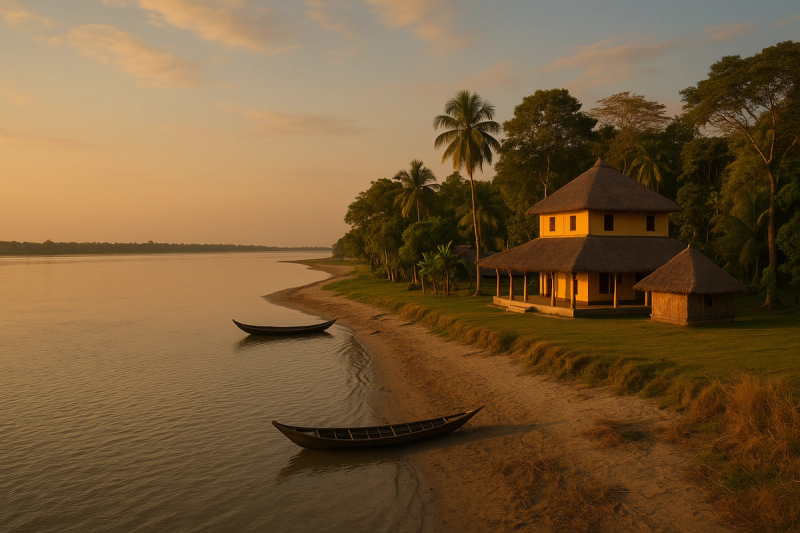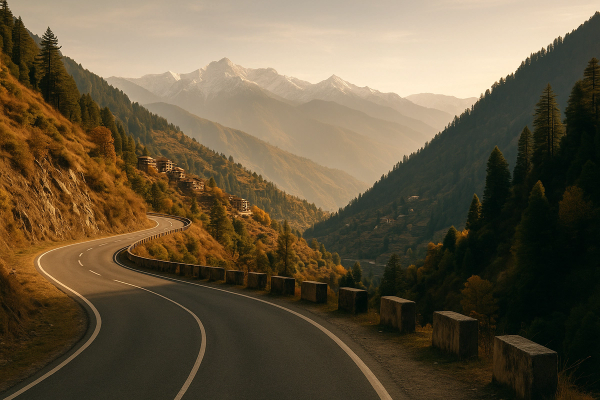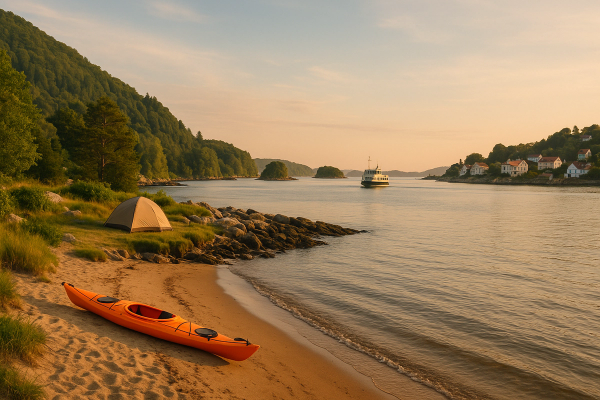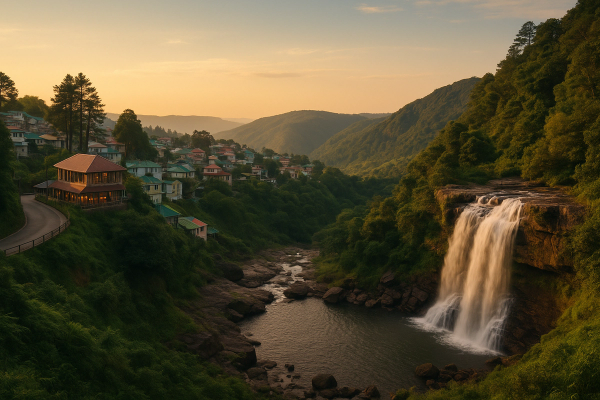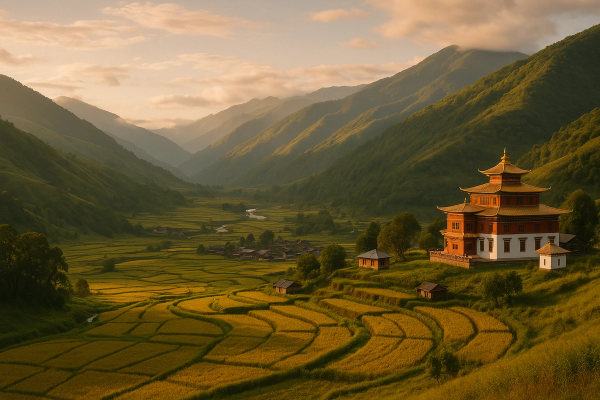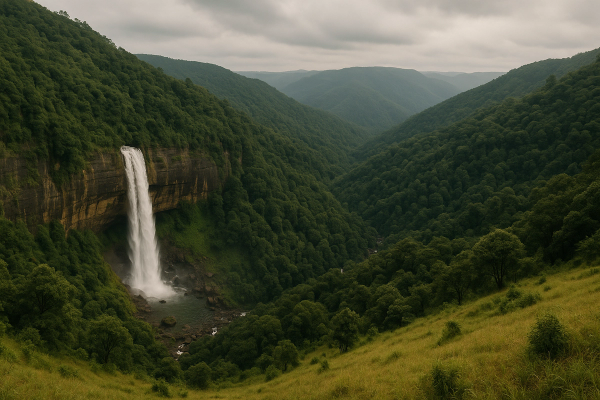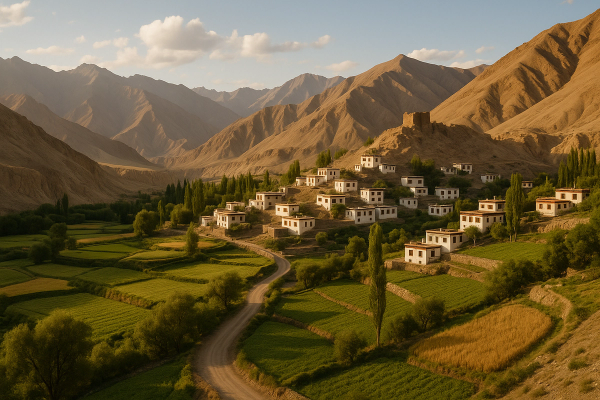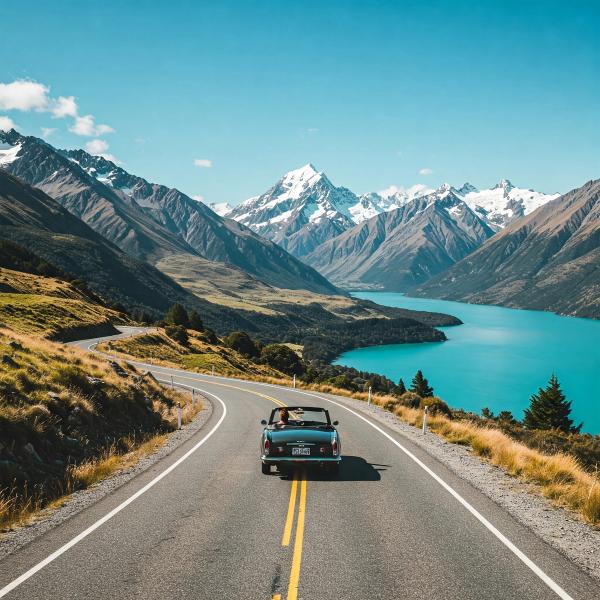Majuli Island Guide: Ferries, Satras & Sustainable Stays — the messy, honest guide I wish I had#
Okay, quick note up front: this is a first‑person style guide stitched from on‑ground chats with Majuli boatmen, satra volunteers, homestay hosts, and super recent traveler notes. I’m writing like a friend telling you what actually works, not a brochure, but ya — treat it as a practical playbook more than a diary entry. Because Majuli is the kind of place where plans change with the river’s mood, and honestly, that’s half the magic and half the headache.¶
Why Majuli pulls you in (and doesn’t let go)#
Majuli isn’t a regular island. It’s this sprawling, shifting river world in the middle of the Brahmaputra, with satras (Vaishnavite monasteries) humming quietly, mask makers turning bamboo and clay into expressions, and Mising villages standing steady on stilt houses as the river keeps doing what it does. People say “largest river island in the world” — I say, one of the most alive. It’s slow. It’s earthy. And it makes you, like, breathe different. Not louder. Just… calmer. The sky feels huge. Birds are everywhere. The roads are sometimes basic, the smiles aren’t. That vibe.¶
Getting there: Guwahati/Jorhat to the ferries, without losing your head#
Easiest route is Guwahati to Jorhat, then Nimatighat ferry to Majuli. Jorhat has an airport (Rowriah) with regular flights from Guwahati/Kolkata and sometimes Delhi. Trains too — Jorhat Town or Mariani, then a cab or auto to Nimatighat (roughly 14–18 km, 35–45 mins depending on traffic and the occassional tea‑estate cow crossing). From Nimatighat, ferries head to Kamalabari Ghat on Majuli. Once you land, shared Sumos, e‑rickshaws, and bikes take you to Kamalabari, Garamur, Auniati side, etc. Keep one buffer day in your plan, because the Brahmaputra likes to keep us humble — fog, wind, or high water can delay ferries.¶
Ferries 101: the stuff nobody tells you but you really need#
- Timings: First passenger ferries usually around 7:00–7:30 am from Nimatighat; last reliable sailings 3:00–4:00 pm (earlier in winter due to fog and early sunset). Return ferries from Kamalabari mirror this. Always ask the IWT counter same morning.
- Frequency: 45–90 mins between boats in the day, but it compresses/expands with river mood. Monsoon (June–September) = fewer, more unpredictable runs.
- Fares (approx): ₹20–50 per person for passenger boats. Scooters ₹120–200. Cars ₹600–1200 depending on boat and load. You pay at the counter or onboard if they wave you through.
- Safety: Wearable life jackets aren’t always handed; ask for one. Don’t crowd the edges for selfies — the current is no joke.
- Luggage & bikes: They load everything from sacks of rice to cycles to goats. If you have a cycle or scooter, arrive 30–45 mins early.
- When ferries pause: Heavy fog (Dec–Jan mornings), storms, or swollen river. Have tea, wait, don’t panic. Locals know the drill better than any app.
As of 2025, the Jorhat–Majuli bridge is still under construction, so ferries are life. If you reach Nimatighat late afternoon hoping for “one last boat”, hmm, maybe. But don’t bet your day on it. Also, Nimatighat shifts seasonally — the approach road can be bumpy black sand one month and a different curve the next. If you’ve motion sickness, carry meds; the sway can be gentle or a lil wild depending on the wind. And keep cash small notes — makes your life easier at counters and chai stalls.¶
Where to stay (sustainably) without breaking the bank#
Majuli’s charm is in simple stays run by people who actually live there — homestays, bamboo cottages, a few eco‑camps. Don’t expect resort‑style pools or 24x7 room service. Do expect warm rice, stories by the fire, and sometimes a rooster alarm clock. Ballpark prices: budget homestays ₹800–1500 for a basic clean room; comfy cottages/eco stays ₹1800–3500; character stays with bigger cottages ₹3500–6000. Many host meals on request: veg/non‑veg Assamese thalis ₹200–450. Some popular long‑running places include artist‑led homestays and simple bamboo cottages near Garamur/Kamalabari; one old favorite you’ll hear about is La Maison de Ananda, plus newer family‑run spots tucked near paddy fields. Network can be patchy inside rooms; a lot of hosts use Jio hotspots. Booking is often via phone/WhatsApp — confirm ferry timings and directions a day prior, especially in monsoon.¶
- Electricity: Power cuts happen. Many stays have inverters/solar for basic lights, not heavy appliances. Carry a powerbank.
- Bathrooms: Mostly Western toilets now, but older homes may be shared. Ask before you book if that matters.
- Water: Hosts usually provide filtered water. Please carry a bottle you can refill; plastic waste is a real pain on the island.
- Location tip: Garamur for quick access to multiple satras, Kamalabari side for easy ferry runs, and quieter stilt villages for pure silence but longer rides.
Satras & soul: how to visit without being that noisy person#
Satras are living monasteries of the Neo‑Vaishnavite tradition started by Srimanta Sankardev — not museums. You’ll hear khol and taal, see monks rehearsing bhaona plays or practicing Sattriya dance, and watch masks painted into life. Dress modest, remove shoes, and please ask before photographing people or rituals. Donations are welcome, not required; put what you can. If a monk tells you a bhaona starts at 6 pm, reach by 5:45 and sit quietly — the silence is part of the show.¶
- Kamalabari & Uttar Kamalabari Satra: known for Sattriya training and performances; sometimes rehearsals are open if you ask nicely.
- Auniati Satra (Garamur side): calm courtyards, museums with manuscripts and gorgeous artifacts; good place to understand the tradition.
- Dakhinpat Satra: graceful architecture and strong festival vibes during Raas season.
- Samaguri (Natun Samaguri) Satra: the mask‑making heart. Craft guided by masters like Padma Shri Hem Chandra Goswami — buy a small mask directly, it supports the art.
- Etiquette: Keep voices low, don’t touch artifacts unless invited, and avoid drone use near satras — it’s restricted and, honestly, rude.
When Majuli goes big: Raas Mahotsav, Ali‑Aye‑Ligang, Bihu days#
Raas Mahotsav (around Kartik Purnima, usually November) is Majuli’s blockbuster — bhaona plays, illuminated satras, whole island lit up. Book stays weeks ahead, ferries get crowded, and carry a shawl for the late‑night chill. Ali‑Aye‑Ligang, the Mising spring sowing festival (Feb), is all about dance, pork with herbs, and community warmth. Bohag Bihu (April) and Magh Bihu (Jan) bring wider Assam’s festive energy to the island too. If you’re festival‑hopping, keep flexible timings — fog and traffic at ghats can add an extra hour just like that.¶
Food trail: thalis, tenga, apong, bamboo shoots, repeat#
Assamese thalis here feel like a hug — rice, dal, greens (xaak), pitika (mashed roasted veg), fish tenga (sour fish curry with outenga or tomatoes), and maybe duck curry if you’re lucky. Mising kitchens do beautiful pork with lai xaak and bamboo shoot, slow, smokey, no fuss. Try pitha and jolpan in the morning; ask for local jaggery if you have a sweet tooth. Apong (traditional rice beer) can be available in villages — be respectful, don’t treat it like a dare. Price ballpark: simple thali ₹150–300; fish or pork curries ₹220–450; tea ₹15–30; snacks ₹20–50. Many homestays cook on pre‑order, so tell them by noon for dinner. And ya, some satra zones are strictly no‑alcohol — follow the rules, it’s not negotiable.¶
Slow experiences you shouldn’t skip (even if your schedule is tight)#
- Cycle lazily through paddy fields between Garamur and Kamalabari, wave at kids, stop for tea wherever you see smoke from a tiny stall. Rent cycles for ₹100–200/day; scooters ₹500–800/day.
- Sit by a beel (wetland) at sunrise. Birdwatch quietly — storks, egrets, whistling ducks. I mean, don’t go naming every bird loudly, just… watch.
- Visit Salmora pottery belt on the southern edge, where clay pots are hand‑shaped without a wheel. Buy something small; they’ll wrap it with so much care you’ll grin.
- Mask workshop at Samaguri: a short session where artisans show bamboo‑clay technique, natural colors, and you get your hands a little dirty.
- Weaving with Mising families: see how looms hum on stilt houses; pick up a stole or gamusa. Eri/muga blends turn up sometimes; ask about natural dyes.
- Sunset on a sandbank (char) facing the Luit — that orange‑pink river mirror is the wallpaper your phone actually deserves.
Practical & safety updates (the non‑sexy but super useful stuff)#
- ATMs & cash: ATMs exist in Garamur/Kamalabari but can run dry. UPI is surprisingly common even at tiny shops now, but network dips. Carry some cash.
- Mobile data: Jio/Airtel 4G mostly workable; nights can be patchy. Download maps offline. If you must work, keep a backup hotspot and patience.
- Health: A primary health centre is available; for serious issues, Jorhat. Carry your meds, ORS, antihistamine, and mosquito repellent. Dengue spikes have happened on and off in Assam — cover up in the evenings.
- Bikes & fuel: Scooters generally ₹500–800/day; cycles ₹100–200/day. Fuel pumps are there but not on every corner; top‑up when you can.
- Weather & seasons: Best months Oct–March. Monsoon Jun–Sep is lush but ferry disruptions are common and some roads go slushy. Winter mornings have fog — ferries may start late.
- Drones: Considered intrusive near satras and wetlands; avoid unless you’ve explicit local permission.
- Waste: There’s limited solid‑waste infrastructure. Pack cloth bags, say no to single‑use plastic, carry your trash out if you can. Please don’t be that person.
A chill 3‑day Majuli plan that actually works#
Day 1: Morning ferry from Nimatighat to Kamalabari. Check into a homestay near Garamur. Post‑lunch, cycle to Auniati Satra for the museum and quiet courtyards. Tea stop, small sunset ride to the river bank. Early dinner; stargaze if the sky’s clear.
Day 2: Start with Samaguri Satra mask workshop. Head to Kamalabari/Uttar Kamalabari for Sattriya rehearsals if they’re open. Lunch thali. Late afternoon, beel birdwatching. If it’s festival season, a bhaona in the evening — sit still, absorb.
Day 3: Salmora pottery belt in the morning. Pick up weaves from a Mising family you met (buy directly if possible). A slow lunch. Catch a mid‑afternoon ferry back; don’t aim for last boat unless you love stress. If ferries delay, just breathe and chai repeat.¶
Responsible travel checklist (tiny choices, big impact)#
- Refill water bottles; skip disposable plastic. Many homestays will help you with refills.
- Dress modestly inside satras; ask before photos. Silence is a language there.
- Buy crafts directly — masks from artisans, weaves from the family loom. Your rupees go a long way here.
- Don’t bargain like a maniac over ₹20 with someone who hosted you like family. Pay fair.
- Walk or cycle short distances. E‑rickshaws over diesel if you can choose.
- If floods/erosion have affected a village, ask hosts how to help — sometimes it’s as simple as sourcing veggies or fish locally that week.
Some places you tick off. Majuli kinda ticks you off first — makes you slow down and then quietly hands your peace back when you’re not looking.
Costs in real life (so you don’t under/over plan)#
- Ferry: ₹20–50 per head one way; scooter ₹120–200; car ₹600–1200
- Local transport: e‑rickshaw short hops ₹100–200; day scooter hire ₹500–800
- Stay: ₹800–1500 (basic), ₹1800–3500 (comfy eco), ₹3500–6000 (character cottages)
- Food: thali ₹150–300; fish/pork curry add‑ons ₹220–450; tea ₹15–30
- Guide/workshop: mask or pottery demo ₹200–600 depending on depth; half‑day cycle tour ₹600–1200
These are living numbers, not hard rules — the river changes, fuel prices change, and sometimes aunty just feeds you an extra course because you liked the tenga too much.¶
Latest on conditions & trends worth knowing#
Erosion and shifting channels continue to shape Majuli — some ghats or roads realign seasonally, and locals adapt fast. E‑rickshaws are more common now, UPI has become normal even at tiny stalls (network willing), and many homestays are adding solar or rainwater systems. Winters see fog delays more than storms; monsoon ferries can pause for days in extremes, so keep an eye on Assam IWT notices or simply call your host the night before. Birding has picked up with responsible small‑group tours; drone use near wetlands is discouraged to protect nesting. Festivals pull crowds — book stays early for November Raas. And while you’ll find cafes doing decent coffee now and then, the island is still proudly old‑school — expect bamboo, not bean bags.¶
Wrap‑up: go for the ferries, stay for the feeling#
Majuli isn’t perfect — some roads rattle your bones, a plan or two will collapse, and the river will remind you who’s boss. But the island has this grounded kindness that’s hard to explain till you’re sipping tea with a stranger who just called you “bhai” and meant it. If you want a place where travel feels like listening, not shouting, this is it. Pack light, travel slow, pay fair, and leave softer footprints than you brought in. And if you want more such grounded India travel guides and messy‑honest tips, hop over to AllBlogs.in — I keep finding solid, real info there when I’m planning the next run.¶

